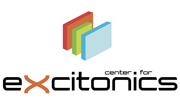
SEMINAR SERIES
Richard Schaller
Department of Chemistry, Northwestern University, Argonne National Laboratory
Abstract:
Excess carrier energy, which many aim to utilize for advanced energy conversion technologies, rapidly dissipates from electrons and holes in both bulk and quantum confined semiconductors despite expectation of slowed cooling in the latter. We aim to characterize dissipation channels available to carriers via time-resolved optical spectroscopies. We utilize both femtosecond stimulated Raman spectroscopy (FSRS) and time-resolved photoluminescence in order to gain insights as to rates and modes of dissipation. Using FSRS, we characterize longitudinal optical (LO) phonon production and dissipation throughout the process of confinement-enhanced, ultrafast intraband carrier relaxation. Upon excitation, we observe a decrease in stimulated Raman amplitude and note a size-independent LO phonon formation time. Mode softening is observed along with evidence of phonon down-conversion processes. Furthermore, spectrally and temporally resolved photoluminescence suggest evidence of acoustic phonon dissipation times that follow diffusive transport, which we can manipulate.
Bio:
Richard D. Schaller is a Staff Member at Argonne National Lab in the Center for Nanoscale Materials and is also an Assistant Professor in the Department of Chemistry at Northwestern University. He received his PhD with Prof. Rich Saykally from University of California Berkeley in 2002 in the area of nonlinear optical microscopy and near-field optics. Subsequently he was selected as a Reines Distinguished Postdoctoral Fellow and became a Permanent Technical Staff Member at Los Alamos National Lab for a combined total of 8 years under the advising of Dr. Victor Klimov. In 2012, he was selected as a Kavli Fellow by the National Academy of Sciences. He has worked on the electronic and optical properties of semiconductor nanocrystals for more than a decade, has published 75 publications, has delivered more than 40 invited presentations, and holds 3 patents.
Related Links:
